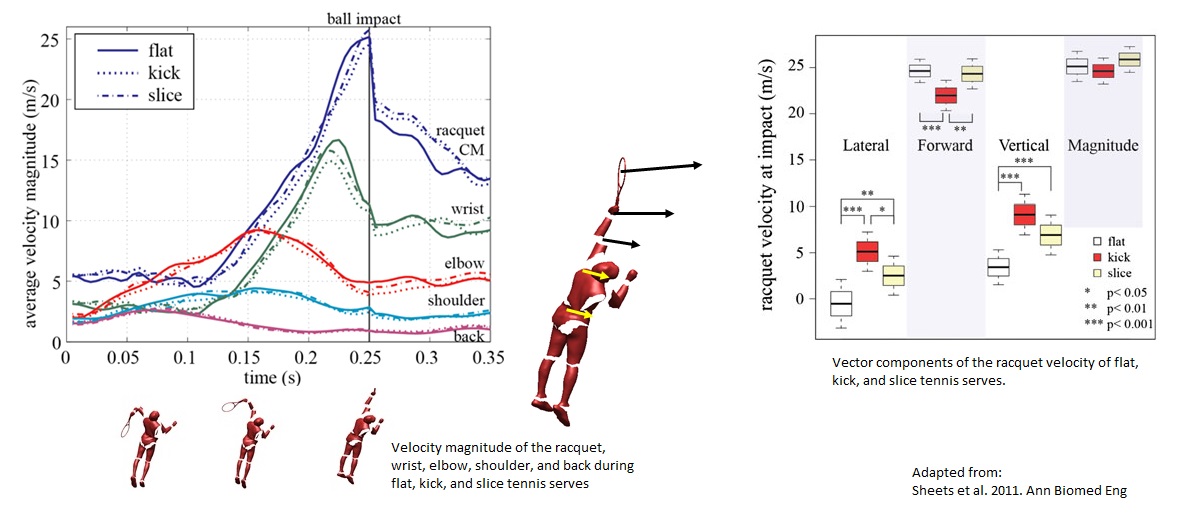Markerless Motion Capture for Kinematic Analysis of the Tennis Serve
One of the biggest advantages of Markerless Motion Capture is the ability to collect data outside of the laboratory setting. Test conditions in a more natural setting could yield more natural movements since subjects are unencumbered by testing equipment.
The BioMotion Laboratory was able to capture NCAA Division I tennis players as they served flat, slice, and kick serves on the courts to provide insight into risk of shoulder injuries.
Eight video cameras captured each serve. Videos were post-processed to create a visual hull. Then a subject specific model was created and forces and moments on the body were calculated.
Major Findings
- Though speeds of each joint and racquet were not significantly different, the components of the racquet velocities were significantly different between serves.
- For example: the kick serve had the largest lateral and smallest forward velocity of the serves.
- The kick serves also had larger lever arms at impact and larger forces in the shoulder and back.
- These factors could suggest increased injury risk to the shoulder and back with a kick serve.
Representative Publications:
- Biomechanical analysis of three tennis serve types using a markerless system.
Abrams G, Harris A, Andriacchi T, Safran M. Br J Sports Med. 2014 Feb;48(4):339-42. - Kinematics differences between the flat, kick, and slice serves measured using a markerless motion capture method.
Sheets AL, Abrams GD, Corazza S, Safran MR, Andriacchi TP. Ann Biomed Eng. 2011 Dec; 39(12):3011-20. - Review of tennis serve motion analysis and the biomechanics of three serve types with implications for injury.
Abrams GD, Sheets AL, Andriacchi TP, Safran MR. Sports Biomech. 2011 Nov;10(4):378-90.

